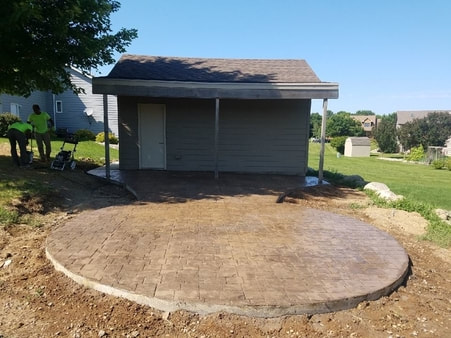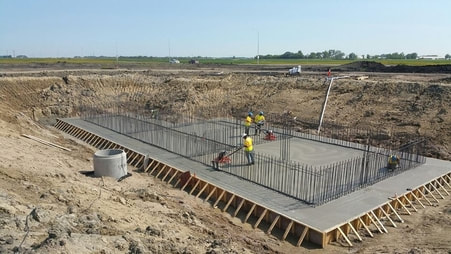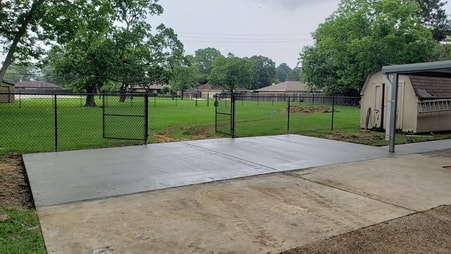Concrete Slab Company - Nampa, ID
|
Concrete slabs are made into many different forms and serve a wide variety of purposes. This is the basis of a concrete companies work and it is what we do day in and day out. A few examples of CONCRETE SLAB WORK are driveways, patios, foundations and sidewalks. If you need a company to pour a concrete slab for you put this number in your phone.
(208)-231-3372 There are a slew of concrete companies that prepared to do CONCRETE FLATWORK IN NAMPA. What separates the best company is ease of communication during the consultation, customer relations and competitive pricing. We are always striving to make the customer experience a straightforward one so that we can get the job done in a timely manner and the customer knows what to expect. We leave no stone unturned to ensure the customer is satisfied with their experience. This model is how we have built the reputation of our company over the past decade. Click our number to call. (208)-231-3372 |
|
Concrete Pouring
Each concrete job is a little bit different and requires us to take color, size, finish, shape and depth into consideration when designing and planning the pour. After these factors have been decided the procedures to put the concrete in place are usually the same regardless of the layout, preparation and concrete placement. I will walk you through the step so you have a better understanding about residential concrete installation.
Once the homeowner has gotten bids on the job and made the decision to go with concrete the contractor will go over what the homeowner can expect in regards to finish, texture, color, price and the way the payment will be received.
First the area to be poured is cleared and cleaned up of any rocks, roots, shrubs or other debris that are in the way of having a smooth surface. Usually a 4 inch sub base is placed to make the ground sturdy to prevent the slab from shifting or settling in the future.
Once the base has been solidified the forms will be put in place, these concrete forms are made of either wood, metal or plastic. These forms are set to account for proper drainage of the concrete what it is finished.
The next step is placement, your LOCAL CONCRETE CONTRACTOR will order concrete that meets the requirement of your project. The cement truck will pull up to the job site assuming it is accessible, if not the contractor will order a boom truck to deposit the mix. While the concrete is being poured the workers will use shovels or rakes to disperse the concrete around the form until it reaches the top edge.
Once the forms are filled the workers will begin to screed the concrete which acts to level it out and compact it. The concrete workers will then use a bull float to smooth the concretes surface and get rid of any depressions or high areas. The edges are then worked with smaller trowels and hand tools. Additional troweling will be done if the job calls for stamped concrete or a decorative finish.
The next step in the process is the curing phase which lasts up to 27 days with the first 2 days being the most important. We often times use a curing agent to ensure that the concrete cures slowly and evenly to reduce the risk of cracks, curling and the surface becoming discolored.
The concrete will be ready for walking in 3-4 days while it will take a week before you could drive a car on it.
Our concrete professionals go through this process with every slab that is poured and walk our clients through the steps to make it as seamless as possible.
Call now for a free consultation
(208)-231-3372
Once the homeowner has gotten bids on the job and made the decision to go with concrete the contractor will go over what the homeowner can expect in regards to finish, texture, color, price and the way the payment will be received.
First the area to be poured is cleared and cleaned up of any rocks, roots, shrubs or other debris that are in the way of having a smooth surface. Usually a 4 inch sub base is placed to make the ground sturdy to prevent the slab from shifting or settling in the future.
Once the base has been solidified the forms will be put in place, these concrete forms are made of either wood, metal or plastic. These forms are set to account for proper drainage of the concrete what it is finished.
The next step is placement, your LOCAL CONCRETE CONTRACTOR will order concrete that meets the requirement of your project. The cement truck will pull up to the job site assuming it is accessible, if not the contractor will order a boom truck to deposit the mix. While the concrete is being poured the workers will use shovels or rakes to disperse the concrete around the form until it reaches the top edge.
Once the forms are filled the workers will begin to screed the concrete which acts to level it out and compact it. The concrete workers will then use a bull float to smooth the concretes surface and get rid of any depressions or high areas. The edges are then worked with smaller trowels and hand tools. Additional troweling will be done if the job calls for stamped concrete or a decorative finish.
The next step in the process is the curing phase which lasts up to 27 days with the first 2 days being the most important. We often times use a curing agent to ensure that the concrete cures slowly and evenly to reduce the risk of cracks, curling and the surface becoming discolored.
The concrete will be ready for walking in 3-4 days while it will take a week before you could drive a car on it.
Our concrete professionals go through this process with every slab that is poured and walk our clients through the steps to make it as seamless as possible.
Call now for a free consultation
(208)-231-3372
Concrete Removal
In many cases concrete just simply needs to be torn out and replaced. Below are a few conditions that warrant concrete removal.
Deep cracks that are the result of large vehicles on the surface, a poorly prepared sub grade or sub grade erosion among other things.
Concrete Slabs that have sunk, which can also be a bi-product of poor sub grade prep or maybe a sprinkler or some kind of water was eating away at the sub grade causing the slab to sink.
In colder climates frost heave can destroy a concrete slab. This is when water gets under the slab and freezes forcing the slab upwards creating cracks and other issues.
If the concrete is spalling in a way that warrants the contractor completely replacing the slab instead of trying to resurface it.
If you are having any of the issues listed above contact us today!
(208)-231-3372
Deep cracks that are the result of large vehicles on the surface, a poorly prepared sub grade or sub grade erosion among other things.
Concrete Slabs that have sunk, which can also be a bi-product of poor sub grade prep or maybe a sprinkler or some kind of water was eating away at the sub grade causing the slab to sink.
In colder climates frost heave can destroy a concrete slab. This is when water gets under the slab and freezes forcing the slab upwards creating cracks and other issues.
If the concrete is spalling in a way that warrants the contractor completely replacing the slab instead of trying to resurface it.
If you are having any of the issues listed above contact us today!
(208)-231-3372




